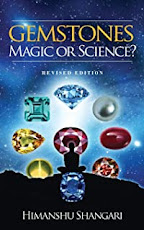Gemmology Tools Every Beginner Should Have
Introduction:
Gemmology, the study of gemstones, is a fascinating field that requires the use of specialized tools to accurately identify and evaluate gemstones. Whether you are an aspiring gemologist, a jewelry enthusiast, or simply curious about gemstones, having the right tools is essential for a thorough understanding of these precious stones. In this article, we will discuss the essential gemmology tools that every beginner should have to embark on their gemstone journey.
Gemological Microscope:
A gemological microscope is one of the most important tools for gemmologists. It allows for a detailed examination of gemstones under magnification, revealing crucial features such as inclusions, color zoning, and cut quality. A good gemological microscope should have a binocular head, adjustable magnification, and a built-in light source. The microscope enables gemmologists to make accurate identifications and assessments based on the gem's internal characteristics.
Refractometer:
A refractometer is a tool used to measure a gemstone's refractive index (RI), which is the degree to which light bends as it passes through the stone. Different gem materials have unique refractive indices, making this a key factor in gemstone identification. A handheld refractometer is easy to use and provides quick and reliable RI measurements. It helps differentiate between gemstone species and is particularly useful in distinguishing between natural and synthetic gemstones. CLICK HERE
Dichroscope:
A dichroscope is a gemological tool that helps identify pleochroism, the phenomenon of showing different colors when viewed from different angles. By observing a gemstone through the dichroscope, gemmologists can determine if a stone is pleochroic, which aids in identifying gemstone species. The dichroscope is especially useful in distinguishing between similar-looking gemstones like garnets and tourmalines. CLICK HERE
Chelsea Filter:
A Chelsea filter, also known as an emerald filter, is a handheld device that helps identify chromium-rich green gemstones, such as emeralds and certain varieties of jadeite. The filter transmits a specific range of red light that interacts with the chromium content in these gemstones, causing them to appear distinctly red. The Chelsea filter is a valuable tool for verifying the authenticity of emeralds and other green gemstones. CLICK HERE
Spectroscope:
A spectroscope is a tool used to analyze the absorption and transmission of light by gemstones. It helps identify the presence of certain elements or chemical compounds that create characteristic absorption patterns. By observing the spectrum produced by a gemstone under a spectroscope, gemmologists can gain insights into its composition and determine if any treatments or enhancements have been applied. CLICK HERE
Gemstone Tweezers and Loupe:
Gemstone tweezers and a loupe are essential tools for handling and examining gemstones. Tweezers with fine pointed tips allow for precise manipulation of small gemstones and help in observing their features under magnification. A jeweler's loupe, a small magnifying lens, is used to closely examine gemstones and evaluate their clarity, cut, and color. Opt for a loupe with higher magnification, such as 10x, for detailed gemstone inspections. CLICK HERE
Gemstone Scales:
Accurate measurement of a gemstone's weight is crucial for determining its value. Gemstone scales, also known as carat scales, are designed specifically for weighing gemstones and other small objects. Look for a scale with high precision and a range of at least 0.01 carats. Digital scales are preferred for their accuracy and ease of use. CLICK HERE
Gemstone Lightbox:
A gemstone lightbox is a useful tool for evaluating a gemstone's color and transparency under standardized lighting conditions. It typically consists of a set of light sources with different color temperatures, such as daylight and incandescent, which allow gemmologists to assess how a gemstone appears under various lighting scenarios. A gemstone lightbox helps ensure consistent color grading and eliminates the influence of ambient lighting. CLICK HERE
Diamond Tester:
While gemmology primarily focuses on colored gemstones, having a diamond tester is beneficial for gemstone enthusiasts. A diamond tester is a handheld device that quickly identifies whether a stone is a diamond or a simulant. It measures a gemstone's thermal conductivity, as diamonds have high thermal conductivity compared to most stimulants. A diamond tester provides a preliminary assessment and is particularly handy when examining diamond jewelry. CLICK HERE
Conclusion:
Equipping yourself with the essential gemmology tools mentioned above is crucial for anyone venturing into the fascinating world of gemstones. These tools enable accurate identification, evaluation, and assessment of gemstones based on their physical properties, optical characteristics, and chemical composition. As you delve deeper into the field of gemmology, these tools will become indispensable in your quest to understand and appreciate the captivating beauty of gemstones. Remember to invest in high-quality tools, as they will serve you well throughout your gemstone journey.










